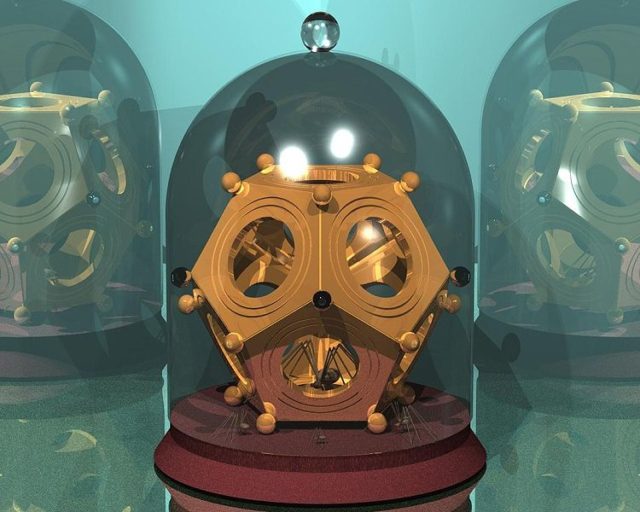A small, hollow object made of bronze, the roman dodecahedron has long been a great mystery. Some of them are made of bronze, but rarely, they are made of stone. The dodecahedron has a geometrical shape and twelve flat faces. Each face is a pentagon, a five-sided shape.
Embellished with a series of knobs on each corner point of the pentagon, there are more than 100 of these objects found in areas that have been part of the Roman Empire. The pentagon faces contain circular holes in them. They were discovered for the first time some 200 years ago. The mystery and enigma surrounding these objects is still to be fully entangled.
Researchers are constantly trying to understand their origin, but also the function and use.
![]()
As mentioned, more than 100 have been found in areas such as Wales, Hungary, but also Spain and the east of Italy. Most of the Roman dodecahedron were found in Germany and France. They range between 1.6 and 4.3 inches in size, but also in texture. As mentioned, most of them are made of bronze, but some are made of stone.
It is believed that the dodecahedra dates from 2nd or 3rd century. The great mystery, however, is how do they work, and what do they do? To date, there is no documentation or notes about them or any logical explanation. The function has not been determined. However, there are many theories and speculations. All of them have been put forward over the centuries.
What they were used for?
Some of the most common speculations and theories include candlestick holders, flower stands, staff decorations, scepter decorations, fortune telling devices, children’s toys, dices, measuring devices, or a bludgeon.
The most commonly accepted theory is that the dodecahedron was used as a measuring device. To be more precise, as a range measuring object on the battlefield. The theory suggests that the object was used to calculate the trajectory of projectiles on the battlefield. This is the reason the objects has different sized holes in the pentagrams. Similar theory suggests they were used as a surveying or leveling device. The problem is none of the theories has been supported by a proof.
Another interesting theory is that the object was astronomic measuring instrument used for determining the optimal sowing date for winter grain. The angle of the sunlight can be measured with the device, and thereby one specific date in springtime, and one date in the autumn can be determined with accuracy. The dates could have been used for specific and important dates in agriculture, for example. The opposite of the theory is that the dodecahedron was different in size and arrangements.
A widely accepted and common theory is that the object was a religious artifact. This is based on the fact that most of the examples were found in Gallo-Roman sites. For example, one such object was found in a woman’s burial ground. There are also theories they were used as candlestick holders, since wax was found in many of the objects.
No matter the theory you believe in, one thing is certain. Owners considered them valuable objects. This is backed up by the fact they were found in coin hoards. Even some small dodecahedra were found with holes and knobs made from gold, further supporting the theory they were valuable objects.



